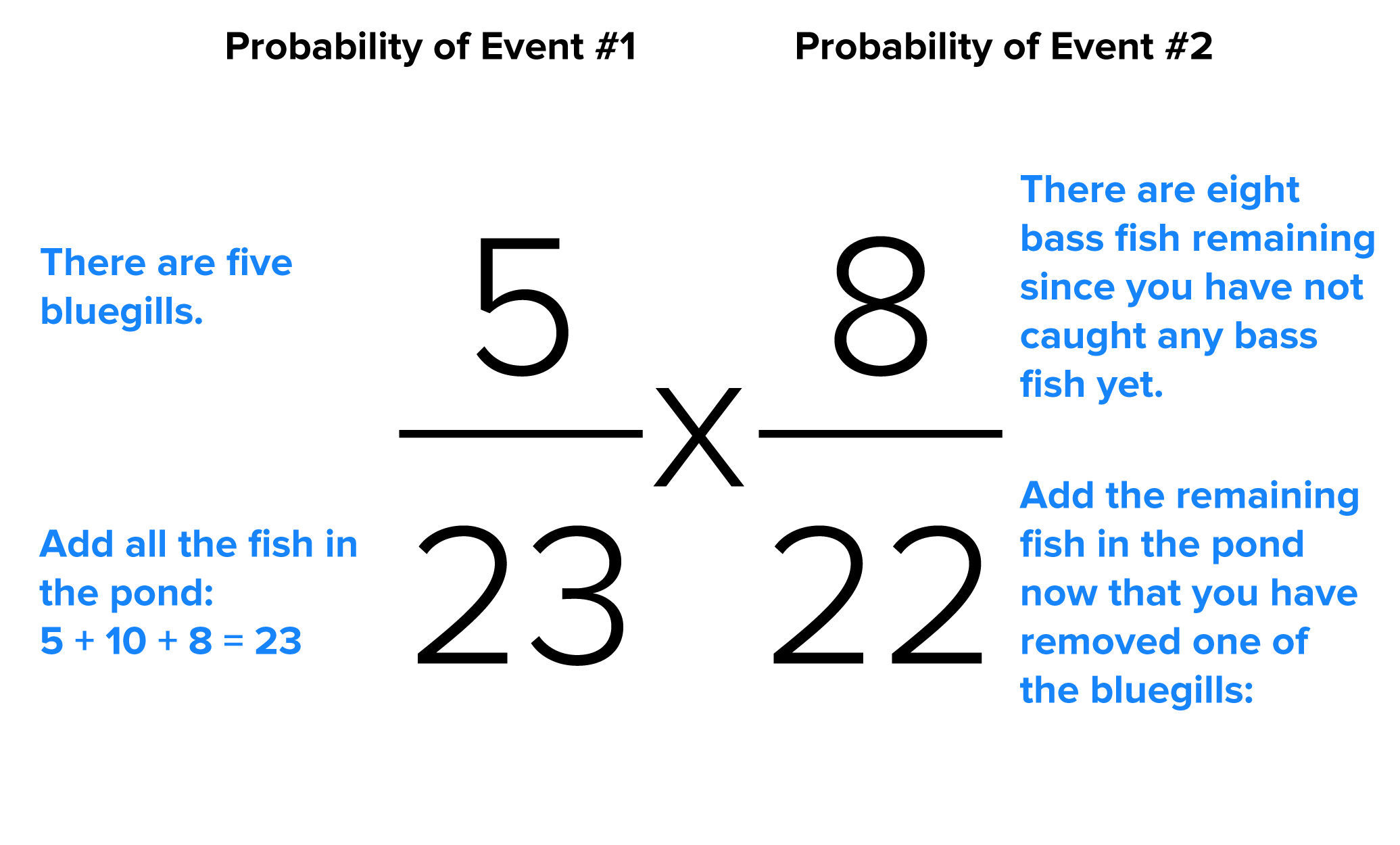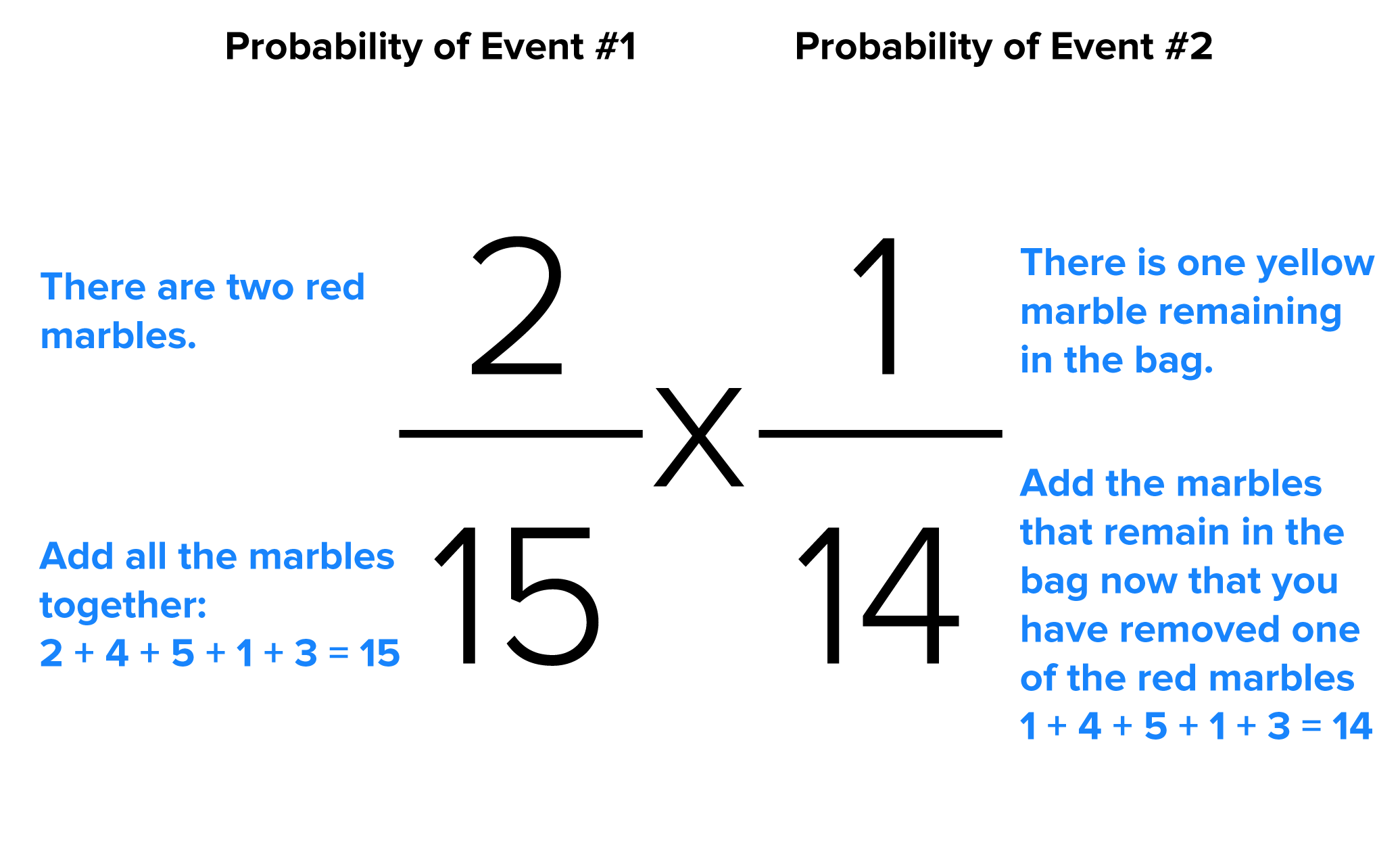Table of Contents |
As you have learned in previous lessons, probability is the likelihood of an event occurring. In our last lesson, we learned how to mathematically determine the probability of two independent events by multiplying together two events that have no effect on the outcome of the second event. In this lesson, we will learn how to determine the probability of two events that do affect each other. For example, running and rolling your ankle or fishing and keeping the fish you land.
Like with determining the probability of independent events, you will multiply the probability of each of the events occurring. However, the difference is: what occurs with the first event will affect the second. For example, when fishing, if you keep the fish that you catch and do not throw them back into the pond, there is now one less type of that fish that you can catch.
EXAMPLE
You are fishing in a stocked pond. You know that the pond contains 5 bluegill, 10 perch, and 8 bass. What is the probability that you will catch a bluegill to eat and then a bass fish? fish. So, the probability of the first event is
fish. So, the probability of the first event is  .
.
 .
.


 .
.
EXAMPLE
You have a bag of marbles containing 2 red, 4 blue, 5 green, 1 yellow, and 3 white. What is the probability of pulling out 1 red marble, and then 1 yellow marble without putting either marble back into the bag? marbles. For the second draw, we have to consider the results of the first draw. The first marble was red, which doesn't affect the number of yellow marbles remaining. So we still have one marble left in the bag. However, since a marble was already drawn and not put back, we only have 14 marbles to choose from, rather than 15. So the probability of drawing a yellow marble on the second draw is
marbles. For the second draw, we have to consider the results of the first draw. The first marble was red, which doesn't affect the number of yellow marbles remaining. So we still have one marble left in the bag. However, since a marble was already drawn and not put back, we only have 14 marbles to choose from, rather than 15. So the probability of drawing a yellow marble on the second draw is  .
.


Problem Solving: Skill Reflect |
Source: THIS TUTORIAL WAS AUTHORED BY SOPHIA LEARNING. PLEASE SEE OUR TERMS OF USE.